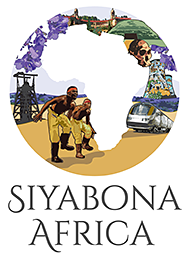
As Johannesburg grew with the advent of 'gold fever' so did the population of migrant black mineworkers who came from all over in search of work - Soweto (an acronym for South - Western Townships) was built to accommodate them in the early 1900's. This was the beginning of what was to become a vast urban sprawl as more and more desperate unemployed people arrived in the hope of securing a job.
Soweto is now made up of 32 different "townships" clustered together, with a vibrant mix of cultures and tribes represented here; it is the largest black township of its kind in the country. Urban renewal has taken place creating great contrasts between the have's and the have not's, the old and the new, a co-existence of Sowetan millionaires and humble traders.
Despite unemployment and lack of basic facilities in some areas, the people have a strong sense of community. Homes here also reflect incredible contrasts with tiny shacks rubbing shoulders with large mansions; many leaders have resided here at some time or another including 2 Nobel Peace Prize winners.
Baragwaneth Hospital, which is thought to be the largest hospital in the southern hemisphere, is located in Soweto although traditional healers are widely consulted by the local residents. Visitors can visit famous sites of struggle during the apartheid years.
The Soweto Uprisings occurred in 1976; tragically a 12-year-old boy was shot dead during the riots. A newspaper photographer took a famous photograph of fatally wounded Hector being carried out of the crowd, this photograph came to symbolise this day.
16 June is now a national holiday and day of remembrance called Youth Day, and the Hector Pieterson Museum here is named after the boy. The Regina Mundi Catholic Church is where fleeing students took shelter and many liberation plots were hatched. In the past Vilikazi Street was the home of Nelson Mandela and Desmond Tutu.
Nelson Mandela House Museum represents an interesting aspect on the past and present. Today, Soweto is alive with business and plenty of tourism potential, although serious poverty and lack of amenities remains in many areas. Visitors can stay at any number of establishments from hotels to Bed & Breakfasts; even home stays can be arranged for interesting cultural insight.
Shebeen (pub) and Soweto township tours have become popular with visitors wanting to meet the local residents and discover for themselves the warm welcome and community spirit.
The Orlando Towers of Soweto are a landmark of these sprawling townships. They have become a tourist attraction and bungi jumping and swinging activities between the towers are available for the adventurous visitor.
Culinary choices range from exotic tagines, curries, Tandoori-style barbeques, and buffets to traditional South African dishes of vegetables and meat and fine-ground maize meal cooked to form a thick porridge-like texture called "pap" or "phutu". For the seriously adventurous traveller Mopane worms (type of caterpillar) in relish and other animal "specialities" can also be found.
Soccer and cricket facilities have been established in Soweto. Soccer City in Nasrec Road is one of the biggest sports stadiums in South Africa and was the venue for the opening and closing soccer matches of the World Cup in 2010.

